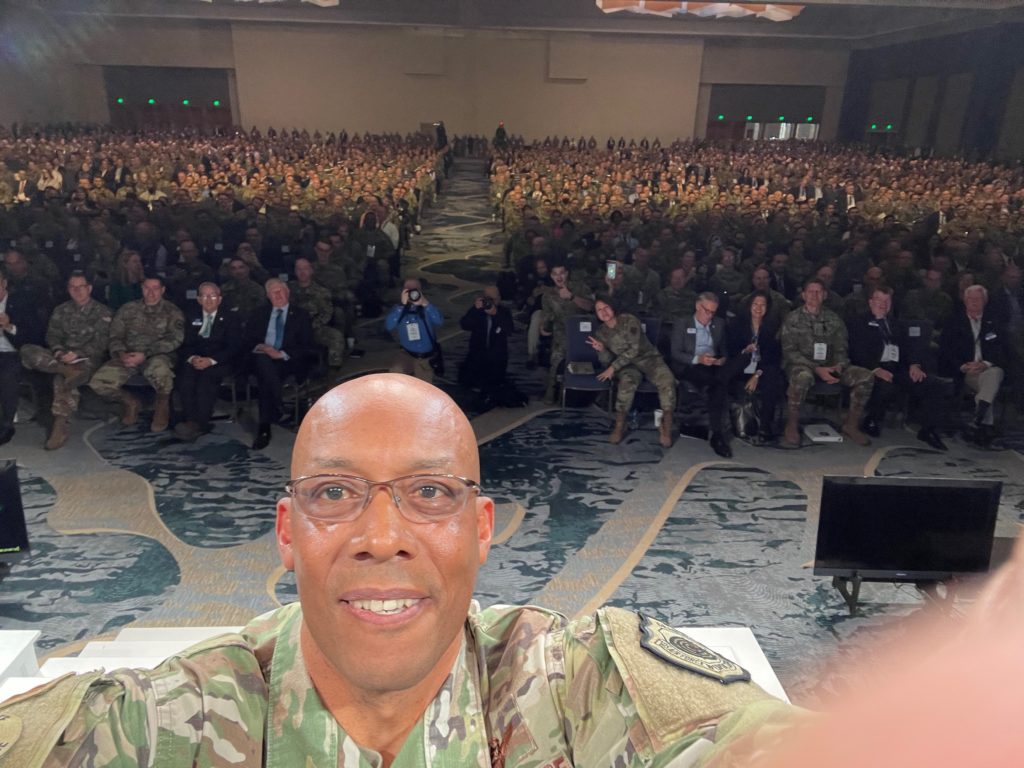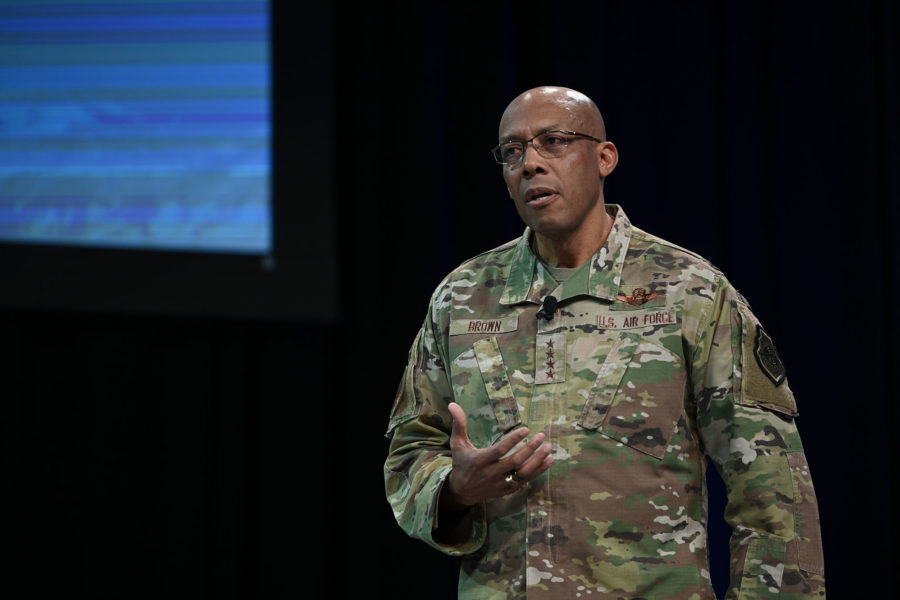AURORA, Colo.—If the question facing the United States today is how to deter or defeat rising threats from China, Air Force Chief of Staff Gen. Charles Q. Brown Jr. says the answer has proven the test of time: Airpower.
In a forceful, sometimes playful, keynote address at the AFA Warfare Symposium March 7, Brown repeated his call to move faster and embrace change, even if it’s “uncomfortable.” Airpower is not like poker, he said, where a good hand is helpful, but a bad hand can still win with a good bluff.
“We can’t afford to bluff,” Brown said. “For more than 75 years, when our nation has called, airpower was the answer,” Brown said. “When addressing the pacing, acute, unforeseen challenges of today, or tomorrow, airpower is the answer.”
Brown hinted at a future force design but also drilled down to clarify a debate he said led in the past to “inconsistencies in some of our strategic documents,” whether the Air Force is organized around missions or functions. The answer is functions.
Brown unveiled the Air Force Future Operating Concept (AFFOC) and defined its five core functions:
- Air superiority
- Global strike
- Rapid global mobility
- Intelligence, surveillance, and reconnaissance
- Command and control
The new operating concept will be the service’s North Star going forward, he said, informing the future force design.
“It’s the aspect of bringing many different parts together,” Brown explained to Air & Space Forces Magazine, “the operational concept, how we might organize, the capabilities we require, and the Airmen we may also require.”
Few U.S. military operations can succeed or even begin without the Air Force, Brown said. Since World War II, no matter what the conflict, America has relied on airpower, from the Doolittle Raiders in the months after Pearl Harbor to Korea, Vietnam, the Gulf War, and even defeating ISIS in Syria. And airpower will remain vital to U.S. operations in the future, Brown told his Airmen.
“It’s what we must do today and what we must prepare to do tomorrow,” Brown said.
Brown’s core functions are part of a broad “security promise” the service provides the U.S. military, he said.
“The Air Force, our Airmen, through these core functions, underwrite the entirety of the joint force,” Brown said.
To underline that point, Brown took a selfie with those in attendance, calling on all the Airmen present to do the same, and send it to all they know as a sign of the importance of their service.

But the Air Force can’t just claim it is the linchpin in the U.S. military. Those outside the service will need to buy in, including Congress, Brown said. Funding, particularly funding in a timely way, is essential.
“We cannot do this by ourselves,” Brown said. “Success takes help. Failure—you can do alone.”
But Brown’s new concepts mainly serve as an internal guide. He presented the key functions the Air Force provides in the form of answers to questions, as might be done on his favorite TV gameshow, Jeopardy, where the host reads answers and contestants must provide answers.
To achieve air superiority, the Air Force is modernizing its fighter fleet with new F-35s, F-15EXs, and, soon, Collaborative Combat Aircraft (CCAs) and a rapidly advancing Next Generation Air Dominance (NGAD) platform.
For its global strike efforts, the Air Force is bringing online the B-21 Raider stealth bomber, the new Sentinel international ballistic missile, and the developing hypersonic weapons.
Global mobility means modernizing the Air Force’s tanker fleet by purchasing the KC-46 Pegasus to replace KC-135s in service since the 1950s. The Air Force also recently unveiled the Next Generation Air Refueling System (NGAS) program to ensure the Air Force and the joint force has the range it needs to fight by providing aircraft with a survivable airborne gas station that can aid the U.S. and allies in the vast distance of the Pacific.
The Air Force’s ISR efforts provide the entire joint force with air and space-based capabilities to deliver timely and accurate intelligence, with a focus on being able to deliver data even in contested environments.
In Brown’s vision of command and control, the service will not just provide information to allow decision-making, but push forward with its contribution to the Pentagon’s Joint All-Domain Command and Control (JADC2) efforts. Brown noted that without reliable communications, global operations become difficult. But more than just ensuring the service can operate in the future, Brown wants the Air Force to provide speed and precision to disrupt America’s adversaries before they have a chance to fully enter the fight.
The new Air Force Future Operating Concept was developed by Brown and Lt. Gen. S. Clinton Hinote, his deputy chief of staff for strategy, integration, and requirements. Hinote’s office is more commonly known as Air Force Futures. But what Hinote and Brown are outlining is not what the Air Force hopes to do with some newfangled technology, but rather what the Air Force must do to prepare itself for the future fight.
“We must adapt,” Brown said. “We are uniquely suited to provide airpower as the cornerstone of the nation’s defense.”
Brown shared a clip of a Jeopardy question from a few years ago asking to which job Charles Q. Brown Jr. had been appointed. The contestant, he said, got the answer wrong.
“We as an Air Force can’t get this wrong,” Brown said. “We have a responsibility to get the answer right.”
